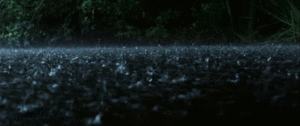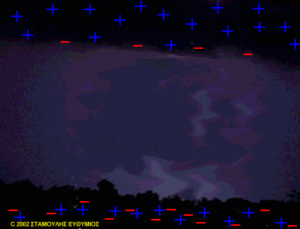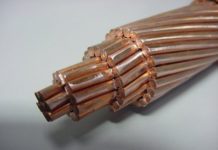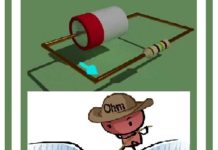Calculating Lightning Distances
Calculating Lightning Distances
Calculating Lightning Distances
Watch the sky for a flash of lightning.Count the number of seconds until you hear thunder.Divide the number of seconds by 5 to calculate the distance the storm is away from your location in miles (or divide by 3 for kilometers).Ex: If you counted 18 seconds from when you saw the lightning, the strike was 3.6 miles (6 kilometers) from your location.Divide Number of Seconds by 3 for Distance in Km or 5 for Distance in Miles.
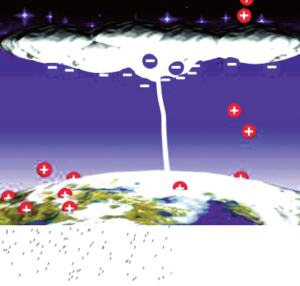


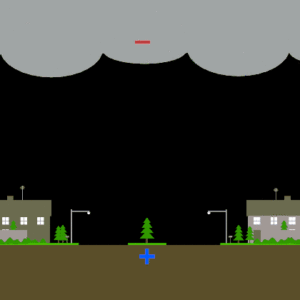
Lightning is an electric current. To make this electric current, first you need a cloud. When the ground is hot, it heats the air above it. This warm air rises. As the air rises, water vapour cools and forms a cloud. When air continues to rise, the cloud gets bigger and bigger.
Lightning happens when the negative charges (electrons) in the bottom of the cloud are attracted to the positive charges (protons) in the ground.

The accumulation of electric charges has to be great enough to overcome the insulating properties of air. When this happens, a stream of negative charges pours down towards a high point where positive charges have clustered due to the pull of the thunderhead.
The connection is made and the protons rush up to meet the electrons. It is at that point that we see lightning and hear thunder. A bolt of lightning heats the air along its path causing it to expand rapidly. Thunder is the sound caused by rapidly expanding air.
History lightning
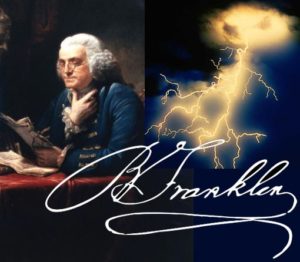 Benjamin Franklin performed the first systematic, scientific study of lightning during the second half of the 18th century. Prior to that time, electrical science had developed to the point where positive and negative charges could be separated. While others had previously noted the similarity between laboratory sparks and lightning, Franklin was the first to design an experiment which conclusively proved the electrical nature of lightning. In his experiment, he theorized that clouds are electrically charged, from which it follows that lightning must also be electrical. The experiment involved Franklin standing on an electrical stand, holding an iron rod with one hand to obtain an electrical discharge between the other hand and the ground. If the clouds were electrically charged then sparks would jump between the iron rod and a grounded wire, in this case, held by an insulating wax candle.
Benjamin Franklin performed the first systematic, scientific study of lightning during the second half of the 18th century. Prior to that time, electrical science had developed to the point where positive and negative charges could be separated. While others had previously noted the similarity between laboratory sparks and lightning, Franklin was the first to design an experiment which conclusively proved the electrical nature of lightning. In his experiment, he theorized that clouds are electrically charged, from which it follows that lightning must also be electrical. The experiment involved Franklin standing on an electrical stand, holding an iron rod with one hand to obtain an electrical discharge between the other hand and the ground. If the clouds were electrically charged then sparks would jump between the iron rod and a grounded wire, in this case, held by an insulating wax candle.
In addition to showing that thunderstorms contain electricity, by measuring the sign of the charge delivered through the kite apparatus, Franklin was able to infer that while the clouds were overhead, the lower part of the thunderstorm was generally negatively charged.
Little significant progress was made in understanding the properties of lightning until the late 19th century when photography and spectroscopic tools became available for lightning research. Time-resolved photography was used by many experimenters during the late l9th century to identify individual lightning strokes that make up a lightning discharge to the ground.
Lightning research in modern times dates from the work of C.T.R. Wilson who was the first to use electric field measurements to estimate the structure of thunderstorm charges involved in lightning discharges. Wilson, who won the Nobel Prize for the invention of the Cloud Chamber, made major contributions to our present understanding of lightning.
Research continued at a steady pace until the late 1960’s when lightning research became particularly active. This increased interest was motivated both by the danger of lightning to aerospace vehicles and solid state electronics used in computers and other devices as well as by the improved measurement and observational capabilities which were made possible by advancing technology.
Ben Franklin’s Kite Experiment
Benjamin Franklin’s wildly dangerous kite experiment has grown into an American legend. Almost everyone has heard of Franklin flying a kite with a key in an electrical storm, but few of us actually understand how the experiment works. Ben hypothesized that lightning is an electrical phenomenon, and that the electrical effect of lightning might be transferable to another object and cause an effect that could be recognized as electricity. He set out to prove it in an experiment.
In 1752, on a dark June afternoon in Philadelphia, the 46 year-old Ben Franklin decided to fly a kite. With the help of his son, William, they attached his kite to a silk string, tying an iron key at the other end. Next, they tied a thin metal wire from the key and inserted the wire into a Leyden jar, a container for storing an electrical charge. Finally, as the sky darkened and a thunderstorm approached, they attached a silk ribbon to the key. Holding onto the kite by the silk ribbon, Ben flew the kite and once it was aloft, he retreated into a barn so that he would not get wet. The thunder storm cloud passed over Franklin’s kite, whereupon the negative charges in the cloud passed onto his kite, down the wet silk string, to the key, and into the jar. Ben however, was unaffected by the negative charges because he was holding the dry silk ribbon, insulating him from the charges on the key. When he moved his free hand near the iron key, he received a shock. Why? Because the negative charges in the key were so strongly attracted to the positive charges in his body, a spark jumped from the key to his hand. Franklin’s experiment successfully showed that lightning was static electricity.

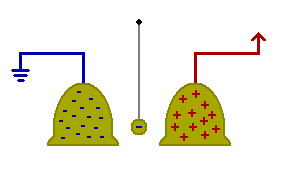 Benjamin Franklin is try other eksperimet. He installed bells in his house to warn him of approaching thunderstorms, as is recorded in a famous portrait of Franklin observing his set of electrostatic bells as a thunderstorm raged outside. This electrostatic device actually was invented in about 1742 by Andrew Gordon, Professor of Natural Philosophy at the University at Erfurt, Germany. Gordon’s Bells constituted the first device that converted electrical energy into mechanical energy in the form of continuous mechanical motion, in this case, the moving of a bell clapper back and forth between two oppositely charged bells.
Benjamin Franklin is try other eksperimet. He installed bells in his house to warn him of approaching thunderstorms, as is recorded in a famous portrait of Franklin observing his set of electrostatic bells as a thunderstorm raged outside. This electrostatic device actually was invented in about 1742 by Andrew Gordon, Professor of Natural Philosophy at the University at Erfurt, Germany. Gordon’s Bells constituted the first device that converted electrical energy into mechanical energy in the form of continuous mechanical motion, in this case, the moving of a bell clapper back and forth between two oppositely charged bells.
Llightning protection



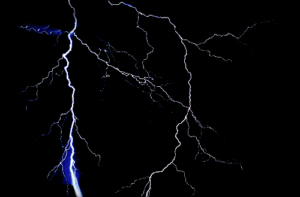
Tall objects such as trees and skyscrapers are commonly struck by lightning. Mountains also make good targets. The reason for this is their tops are closer to the base of the storm cloud.
However, this does not always mean tall objects will be struck. It all depends on where the charges accumulate. Lightning can strike the ground in an open field even if the tree line is nearby.
Keep an eye at the sky. Look for darkening skies, flashes of lightning, or increasing winds. Lightning often proceeds rain, so don’t wait for the rain to begin. If you hear the sound of thunder, go to a safe place immediately. The best place to go is a sturdy building or a car, but make sure the windows in the car are shut. Crouch down in the open area, keeping twice as far away from a tree as far as it is tall. Put your feet together and place your hands over your ears to minimize hearing damage from thunder. If you’re with a group of people stay about 15 feet from each other. Stay out of water, because it’s a great conductor of electricity. Swimming, wading, snorkeling and scuba diving are not safe. Also, don’t stand in puddles and avoid metal. Stay away from clotheslines, fences, and drop your backpacks because they often have metal on them. If you’re playing an outdoor activity, wait at least 30 minutes after the last observed lightning strike or thunder.
Attention !!!
If you rush, and you are in the open, do not stand upright so as not to be higher than the object in the vicinity. Do not hold metal objects near you, you should not stand under the tree or lonely objects !!!

